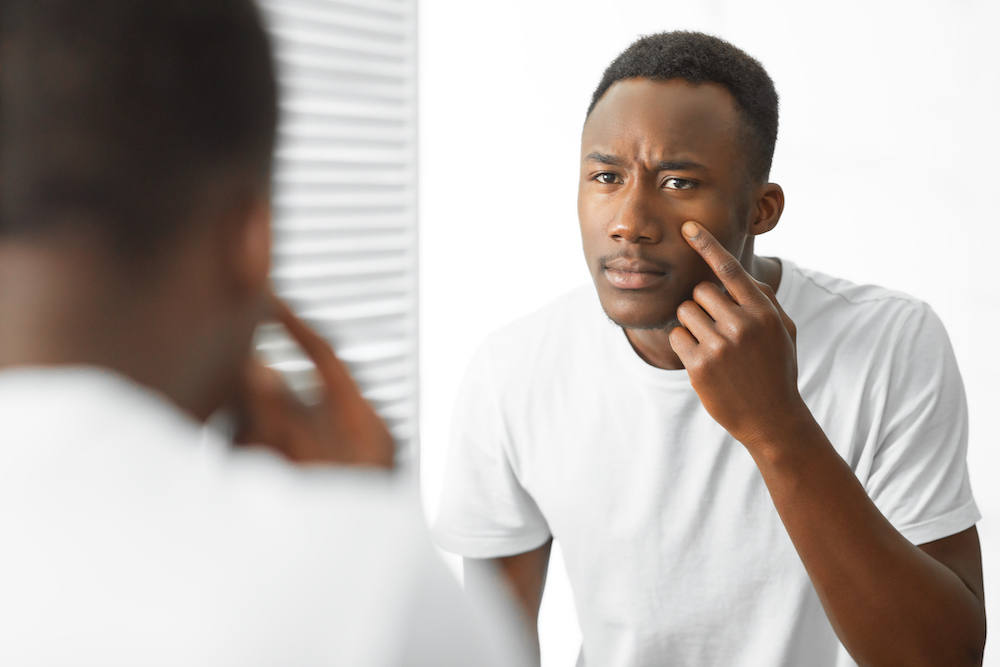What To Do If You Find a Mole?

Most of us will develop moles over the course of our lives. It is typical that an adult will have anywhere between 10-40 moles on their bodies. In most cases, a mole is nothing to be alarmed about. They are common and harmless.
However, there are some circumstances in which a mole can require medical attention. Abnormal moles can become cancerous and should be looked at by your dermatologist right away. Sometimes, a mole will need to be removed for medical or aesthetic reasons.
At Buckhead Dermatology, Dr. Straughn is board-certified and has been practicing dermatology in the Atlanta area for more than 25 years. She is skilled at performing full body scans to check for abnormal moles, or the development of new moles.
If you have a mole that concerns you, do not wait to call the dermatology office of Buckhead Dermatology in Atlanta and College Park today.
What is a mole?
There is a cell in our skin called a melanocyte. These cells contain a pigment called melanin that gives skin its color. When melanocytes begin to grow in clusters, they form moles. The appearance of a mole can vary in color, shape and size. Moles are typically brown in color, but can also be black, red, pink, blue, or tan.
Moles can be smooth or textured, flat or slightly raised. Most moles are round or oval in shape. Generally, a mole is about 6 millimeters in diameter. Some can be much larger!
Melanocytes can cluster almost anywhere on your body where there is skin. Many people have moles on their scalps, armpits and even on their fingers or toes. Usually, adults will stop developing new moles by the age of 50. It is not uncommon for moles to change in appearance over time.
That is why it is important to perform regular skin checks on your own and annual skin cancer screenings at your dermatologist’s office. Changes in mole shape, color or size could indicate a problem that requires medical attention.
What are the signs of an abnormal mole?
There are a number of indications that a mole may be abnormal. Use the following guide to help you identify changes in moles and communicate effectively to your dermatologist.
ABCDE:
- Asymmetrical
- Border
- Color
- Diameter
- Evolving
Prolonged exposure to the sun can cause moles to form or change shape. UV rays can damage the melanocytes and increase your chances of developing skin cancer, including the lethal form called melanoma.
Why would you get a mole removed?
Most moles are not problematic and do not require a professional removal. However, there are some valid reasons why you may choose to go through a mole removal procedure.
If you identify an abnormal mole or if your dermatologist identifies an abnormal mole during a skin cancer screening, it may be required to remove the mole. Removing a suspicious mole early can significantly increase your chances of health and recovery.
Other patients choose to have a mole removed because of its location on the body. Moles that appear on the hands or feet or in areas where clothing regularly rubs against it could cause irritation and discomfort.
Mole removal procedures may involve removal with a scalpel or through a burning or shaving procedure. Never attempt to remove a mole on your own. This is a procedure that should only be done by a professional.
In other cases, patients seek a mole removal procedure because they have a large mole in a very visible location on their body, such as their face or neck. These cosmetic procedures have very few risks and minimal downtime, if any. Although not removed for a medical reason, a large, visible mole can affect a person’s confidence and self-image.
Mole Removal Dermatologist Atlanta
If you have a mole that concerns you, schedule a consultation with your Atlanta dermatologist today. At Buckhead Dermatology, Dr. Straughn can help you assess your mole and determine the best course of action for treatment.
In some cases, mole removal procedures may be recommended, especially if the mole indicates a concern or is a cancer risk. Contact Buckhead Dermatology today to schedule your appointment with board-certified Atlanta dermatologist Dr. Straughn.
